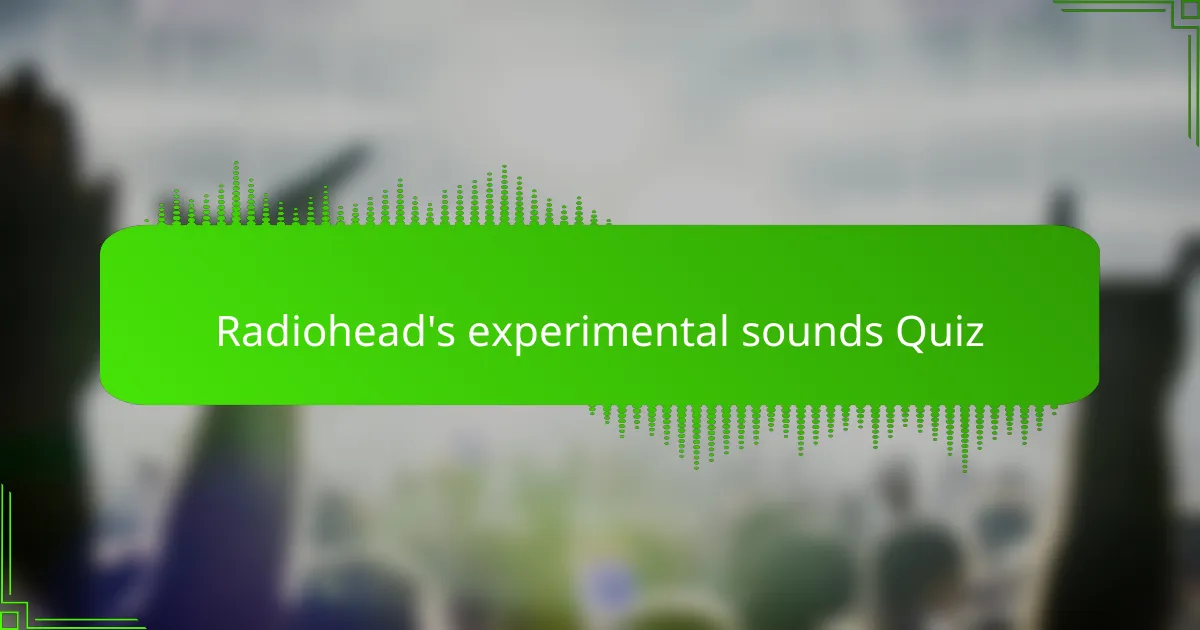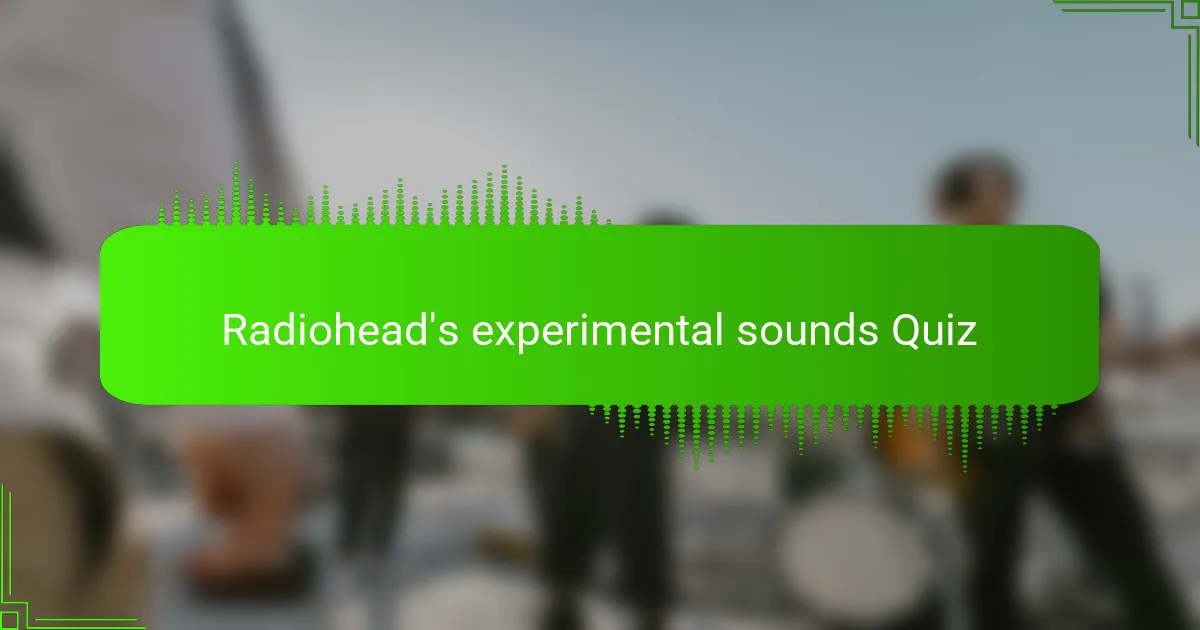
Congratulations! You’ve Completed the Quiz!
Thank you for participating in our quiz on Radiohead’s experimental sounds. We hope you found it both enjoyable and enlightening. Exploring the band’s unique approach to music can deepen your appreciation not only for their work but for the broader landscape of experimental music as well.
Throughout the quiz, you likely discovered fascinating details about the innovative techniques and influences that shape Radiohead’s sound. From their use of technology to their genre-defying compositions, the band’s journey is a rich tapestry of creativity. This knowledge can enhance your listening experience, allowing you to connect with their music on a deeper level.
We invite you to check out the next section on this page, where you’ll find more comprehensive information about Radiohead’s experimental sounds. Dive into the discussions, analyses, and insights that can further enrich your understanding. Let’s continue this musical exploration together!

Radiohead’s experimental sounds
Exploring Radiohead’s Sonic Evolution
Radiohead, formed in 1985, is known for their innovative approach to music. Their sound has evolved significantly from their early rock roots to incorporate experimental elements. Albums like “OK Computer” and “Kid A” showcase their shift towards electronic experimentation. This change reflects their willingness to push boundaries and explore new genres, ultimately influencing modern music.
The Influence of Electronic Music in Radiohead’s Work
Radiohead’s incorporation of electronic music is significant in their experimental sound. Starting with “Kid A,” they utilized synthesizers and electronic production techniques. Tracks like “Everything in Its Right Place” highlight this transition. Collaborations with producers like Nigel Godrich have further enhanced their electronic soundscape, creating a unique auditory experience that challenges traditional rock norms.
Instrumentation and Innovative Sound Design
Radiohead employs unconventional instrumentation and sound design to create their distinctive sound. Use of instruments like the Ondes Martenot and extensive layering of sounds is prevalent. On the album “Amnesiac,” tracks like “Pyramid Song” exhibit complex rhythms and atmospheric textures. This innovative use of instruments allows them to craft songs that evoke deep emotions and unique auditory landscapes.
Thematic Exploration in Experimental Tracks
Radiohead’s experimental tracks often explore complex themes such as alienation and modernity. For example, “The National Anthem” juxtaposes chaotic brass with a driving bass line. This is reflective of societal tensions. Their lyrics often provoke thought and invite listeners to reflect on the human experience, enhancing the impact of their experimental sound.
Live Performances: An Experiment in Sound
Radiohead’s live performances are an extension of their experimental sound. They frequently reinterpret studio tracks with new arrangements. A notable example is their rendition of “Lucky,” where they incorporate extended improvisation. This approach keeps their music dynamic and offers fans a fresh experience, highlighting their commitment to experimentation in every aspect of their artistry.
What are Radiohead’s experimental sounds?
Radiohead’s experimental sounds encompass a broad range of innovative techniques and styles that diverge from traditional rock music. They incorporate elements such as electronic instrumentation, unconventional song structures, and abstract lyrics. Albums like “Kid A” and “Amnesiac” showcase their use of ambient music and digital manipulation, leading to a distinctive atmospheric sound. Critics note their creative approach to tonality and rhythm, which has placed them at the forefront of the alternative music scene.
How did Radiohead develop their experimental sound?
Radiohead developed their experimental sound through a combination of artistic evolution and technological influence. The band began exploring new musical directions after their success with “OK Computer.” They embraced electronic music and expanded their sonic palette, largely influenced by artists like Aphex Twin and Brian Eno. The incorporation of software instruments and sampling techniques allowed for greater experimentation, particularly evident in their album “Kid A,” released in 2000.
Where can fans experience Radiohead’s experimental sounds?
Fans can experience Radiohead’s experimental sounds primarily through their albums, available on platforms like Spotify, Apple Music, and Bandcamp. Live performances also highlight their experimental nature, where they often reinterpret songs with unique arrangements. Additionally, various music documentaries and interviews provide insight into their innovative techniques, exemplified by the film “Meeting People is Easy,” which chronicles their creative process.
When did Radiohead start embracing experimental sounds?
Radiohead began embracing experimental sounds in the late 1990s, particularly with the release of “OK Computer” in 1997. This album marked a significant shift in their musical identity, moving away from standard rock formats towards more experimental elements. Their exploration deepened with “Kid A” in 2000, which fully embraced electronic influences and abstract compositions, further establishing their reputation for innovation.
Who are key influences on Radiohead’s experimental sound?
Key influences on Radiohead’s experimental sound include artists like Brian Eno, whose ambient music concepts inspired their sonic explorations. The band has also cited the impact of musicians such as Aphex Twin and Kraftwerk, known for their electronic innovations. Additionally, the experimental rock scene of the 1970s and 1980s, particularly bands like Can and Sonic Youth, played a crucial role in shaping their artistic direction.

